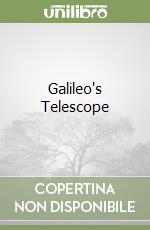 Libri di Catherine Bolton su Unilibro.it
)
Libri di Catherine Bolton su Unilibro.it
)
|
|
2022 |
 Title :
E tu... cosa ne pensi? Il libro delle risposte sospese. Con 2 lenti filtro-color
Title :
E tu... cosa ne pensi? Il libro delle risposte sospese. Con 2 lenti filtro-colorAuthor: Bolton Catherine Publisher: QRedizioni E tu... cosa ne pensi? 'Ma chi? Io?'. Sì, proprio tu! La domanda ti sorprende? Non sai cosa dire o hai fretta di rispondere? E se questa domanda nascondesse una formula magica capace di immergerti in una nuova avventura? Questo libro è l'occasione per dialogare con chi vuoi, intrecciare pensieri, allenare la tua fantasia e liberare idee. Abbi il coraggio di ascoltare e dubitare. Esplora dove non sai, vaga tra i dilemmi, divertiti, prendi tempo. Ecco gli strumenti della filosofia! Le sue domande essenziali e le sue categorie sono bussole per andare lontano. La filosofia è un gioco imprevedibile in cui lo stupore del bambino e la ragione dell'adulto si incontrano a colorare il mondo di nuove parole. E tu... cosa ne pensi? Abituarsi al ritmo di questa domanda vuol dire aprirsi all'incantesimo possibile nel cuore di ogni incontro, fino a chiedere persino a una pianta, al sole, a un animale o a un libro: E tu... cosa ne pensi? Con una doppia pagina interna/gioco con immagini da decodificare con le 2 lenti filtro-color. Progetto filosofico: Eleonora Mocenni e Fabrizio Mele. Età di lettura: da 4 anni. € 20,00
|
|
|
1915 |
 Title :
Galileo's Telescope
Title :
Galileo's TelescopeAuthor: Bucciantini Massimo, Camerota Michele, Giudice Franco, Bolton Catherine (TRN) Publisher: Harvard Univ Pr Between 1608 and 1610 the canopy of the night sky changed forever, ripped open by an object created almost by accident: a cylinder with lenses at both ends.Galileo’s Telescope tells the story of how an ingenious optical device evolved from a toy-like curiosity into a precision scientific instrument, all in a few years. In transcending the limits of human vision, the telescope transformed humanity’s view of itself and knowledge of the cosmos. Galileo plays a leading—but by no means solo—part in this riveting tale. He shares the stage with mathematicians, astronomers, and theologians from Paolo Sarpi to Johannes Kepler and Cardinal Bellarmine, sovereigns such as Rudolph II and James I, as well as craftsmen, courtiers, poets, and painters. Starting in the Netherlands, where a spectacle-maker created a spyglass with the modest magnifying power of three, the telescope spread like technological wildfire to Venice, Rome, Prague, Paris, London, and ultimately India and China. Galileo’s celestial discoveries—hundreds of stars previously invisible to the naked eye, lunar mountains, and moons orbiting Jupiter—were announced to the world in his revolutionary treatiseSidereus Nuncius. Combining science, politics, religion, and the arts, Galileo’s Telescope rewrites the early history of a world-shattering innovation whose visual power ultimately came to embody meanings far beyond the science of the stars. € 29,90
|